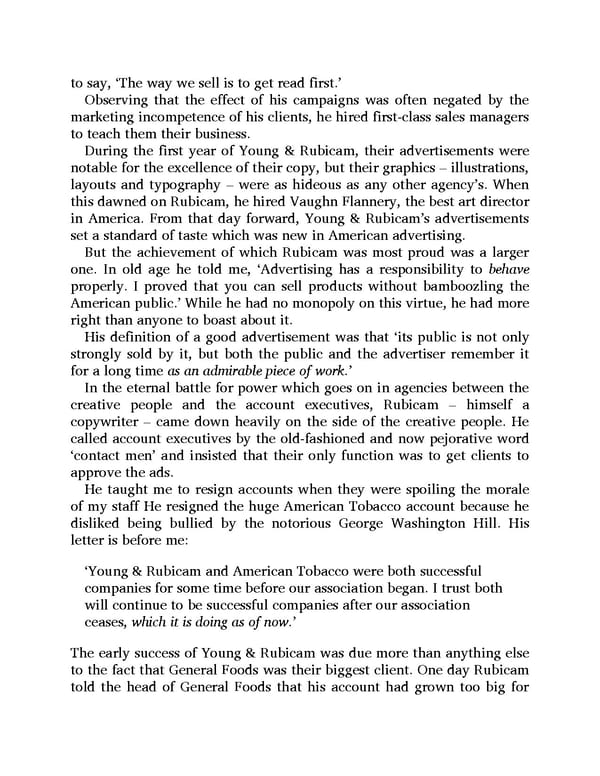to say, ‘The way we sell is to get read first.’ Observing that the effect of his campaigns was often negated by the marketing incompetence of his clients, he hired first-class sales managers to teach them their business. During the first year of Young & Rubicam, their advertisements were notable for the excellence of their copy, but their graphics – illustrations, layouts and typography – were as hideous as any other agency’s. When this dawned on Rubicam, he hired Vaughn Flannery, the best art director in America. From that day forward, Young & Rubicam’s advertisements set a standard of taste which was new in American advertising. But the achievement of which Rubicam was most proud was a larger one. In old age he told me, ‘Advertising has a responsibility to behave properly. I proved that you can sell products without bamboozling the American public.’ While he had no monopoly on this virtue, he had more right than anyone to boast about it. His definition of a good advertisement was that ‘its public is not only strongly sold by it, but both the public and the advertiser remember it for a long time as an admirable piece of work.’ In the eternal battle for power which goes on in agencies between the creative people and the account executives, Rubicam – himself a copywriter – came down heavily on the side of the creative people. He called account executives by the old-fashioned and now pejorative word ‘contact men’ and insisted that their only function was to get clients to approve the ads. He taught me to resign accounts when they were spoiling the morale of my staff He resigned the huge American Tobacco account because he disliked being bullied by the notorious George Washington Hill. His letter is before me: ‘Young & Rubicam and American Tobacco were both successful companies for some time before our association began. I trust both will continue to be successful companies after our association ceases, which it is doing as of now.’ The early success of Young & Rubicam was due more than anything else to the fact that General Foods was their biggest client. One day Rubicam told the head of General Foods that his account had grown too big for
 Ogilvy on Advertising Page 277 Page 279
Ogilvy on Advertising Page 277 Page 279